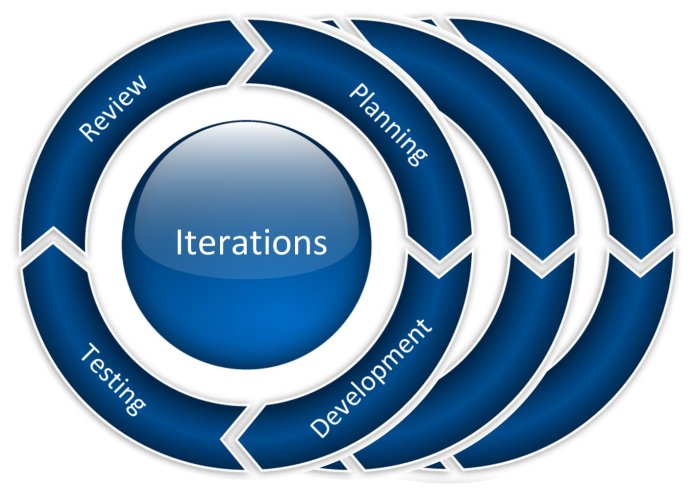Review the Characteristics of an Agile Iteration

Most people understand that the days of the five-year, monolithic project are over – and have been for some time. The better approach is to break large projects into a set of smaller, easier to manage projects. Short projects are easier to manage than large projects. There are fewer things that can go wrong, fewer people involved, less time for scope changes, etc.
The Agile model takes this to an extreme by stating that even the days of the six-month development cycle is over, as is the three-month cycle and maybe even the one-month cycle. Partial solutions should be up and running in a very short time, with very short iterative cycles designed to deliver working code that is built up to a final solution.
Implement Complete Functionality
Agile iterations implement complete functionality for a set of selected customer requirements. This includes the complete mini-lifecycle of analysis, design, construct, test and implementation. The selected functionality within the iteration is not worked on simultaneously. Instead new functionality is worked on as team members are available, meaning at any given time there may be one or more requirements independently going through analysis, design, construct, test and implementation.
Implement Holistically
Each iteration is compressed to a few weeks or even a few days. Short iterations are the result of a holistic set of characteristics of the Agile model. It is not easy to deliver in very short cycles if you pick some of the Agile techniques and ignore others. For example, one of these characteristics of an Agile project is that the product owner is integrally involved in the project and is empowered to make decisions in short timeframes. Obviously you cannot run two week iterations if your product owner consistently takes a week or longer to answer questions and make decisions.
Create Short Iterations
Each team should determine the length of an iteration for its specific project. Shorter iterations are generally better than longer iterations, and 30 days is probably the longest that you want an iteration to last. Shorter iterations tend to squeeze out inefficiencies and overhead processes. For example, you may choose a 30-day iteration because you have a one week approval process at the end of the iteration. If you force the iteration down to two weeks, it will also force this review process to get shorter as well.
Keep Iterations Consistent
It is important that each iteration stay the same length so that your team can develop a steady rhythm of work. If you chose a 30 day iteration, for instance, you need to make sure that each iteration is delivered in exactly 30 days. You don’t want some sprints taking 35, 40 or 50 days. If that happens the Agile discipline breaks down and the project moves more toward a traditional model.
